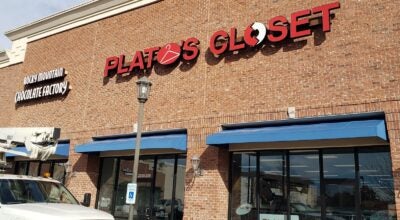Dealing with homelessness
Published 12:00 pm Friday, May 6, 2016
An unintentional stumbling block to help the less fortunate residents of Lafayette County was discovered during the LOU Summit to End Homelessness Thursday that revolved around semantics.
What does homelessness mean? What exactly is affordable housing?
Thanks to the work of Oxford’s many organizations that deal with those at risk to be homeless, the problem is not always visible to the common resident. There aren’t many people sleeping under bridges in Oxford.
“But they’re sleeping on the floor of someone else’s house or their cars,” said Kim Shackelford with the Doors of Hope Transition Ministries. “Being homeless means you don’t have a place of your own.”
Those who can’t find a place are often sent to shelters in other areas, like Tupelo.
Darryail Whittington said too many organizations use the term “affordable housing” when the correct term should be “workforce housing.” The medium price for a home in Oxford is $218,000. Someone making $30,000 — the average income in Oxford — can only afford a $70,000 home, according to the Rev. Margaret Burnett, associate pastor of Outreach Ministries Idlewold Presbyterian Church in Memphis, who spoke at the start of the summit.
“There is no affordable housing for our workforce,” Whittington said.
While there may be more affordable land and housing further out in Lafayette County, not having public transportation for those individuals was identified as one of the top issues facing the growing at-risk population.
Representatives from several area groups that work with low-income families, like Habitat for Humanity, The Pantry, Interfaith Compassion Ministries spoke to the group of about 75 people who attended the all- day summit, explaining what they did and what their needs are.
After lunch, the group broke up into work groups to focus on housing and shelters, food, financial assistance, med- ical care and employment. The groups worked for an hour to identify short- and long-term goals to help improve services in Oxford and Lafayette County.
Dr. Albert Nylander, director of the McLean Institute for Public Service and Community Engagement, who helped sponsor the summit with Doors of Hope and the United Way of Oxford and Lafayette County, directed the groups to whittle down their lists to come up with two short, and two long-term goals.
Making goals
Some of the top goals included having a resource directory and specialist that would work with all of the organizations to coordinate them and services offered; communications and community collaboration; transportation; advocacy; homeless education and finding space for workforce housing and a homeless shelter for temporary emergency situations.
The group agreed that homelessness communications and collaboration and advocacy and education were the top two short-term goals, and finding space and land for homes and shelters and transportation for county residents were the two top long-term goals.
Finding solutions
Lena Wiley with Interfaith Compassion Ministries reported that in 2015, ICM helped 220 people and included 76 children.
In 2010, former Mayor Richard Howorth formed the Oxford Homeless Task Force that was tasked with investigating and researching the area’s growing homeless and displaced people population.
From this committee and under the leadership of chairwoman Jean Shaw, services were improved and new programs were developed to address the problems. Doors of Hope Transition Ministries and More Than a Meal were two of the programs that developed. Local nonprofit leaders felt it was time to readdress the issues while the county and city are growing at such a fast pace.
Daniel Doyle, who attended the event, suggested that organizations be more involved with city and county government as they work on their comprehensive plans to include goals for having more affordable and workforce housing.
“The city’s Vision 2037 plan mentions affordable housing, but has no teeth,” he said. “We can be those teeth and hold them accountable.”
Some suggested making developers provide a portion of housing for low-income families.
“If they’re building a large complex, maybe they could be given incentives to make a few of the units for lower-income families,” said Whittington, who works with Habitat Humanity.
Other suggestions included having one central building for all nonprofits that offer services to homeless and at-risk families and researching how other communities handle workforce housing and homelessness issues.





